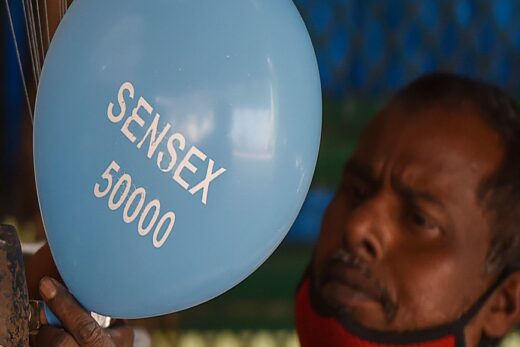Repo rate has remained at 4% since May 22, 2020; the lowest it has been since April 2001.
FD investors having been waiting for the key rates to be hiked since interest rates on their deposits have been lowered little by little by financial institutions like banks and NBFCs for the last two years.
However, things could change soon. Many economic indicators including inflation being on the higher side, bigger government borrowing programme, 10-year G-sec yield at around 6.2% etc. are hints that the RBI could hike rates in the near future. In such a scenario some smart moves can help FD investors make the best of the current scenario. Here is how FD investors can enhance return on their deposits.
Short term FD rates may rise first
Whenever the interest rate cycle makes a U-turn from the bottom, it is typically the short to medium term interest rates that are likely to rise first. As far as long-term interest rates are concerned, it will take a little longer for these rates to go up significantly.
Make the most of short term rate hike
If you are planning to book an FD now or are looking to renew your existing FD, then it will be better to go for shorter term deposit, say one year or lower, so that your deposit is not locked at a lower rate for long. Whenever the short to mid term rates rise, you can start increasing the tenure of the FDs accordingly.
Make an FD ladder to guard against lowest return
If your deposit is up for renewal in the current scenario when the interest rate cycle is close to its lowest point, it could be a stressful situation. However, you can avoid this by creating an FD ladder. To do so you need to divide one big FD into smaller FDs, and book these for different tenures. You can do this in a way that one FD matures each year.
For instance, if you have a Rs 5 lakh FD, you can divide it into 5 parts and book 5 FDs of different tenures of 1 year, 2 years, 3 years, 4 years and 5 years. After one year, when the one-year tenure FD matures renew it for 5 years. After two years your FD with 2-year tenure will mature so you can renew it again for next 5 years. Now repeat this exercise each year and your ladder will be ready. This will ensure that not all of your deposits are locked at the lowest interest rate at the same time and your average return is on the higher side.
Consider floating rate options
When you do not wish to take any chances against the fluctuating interest rate cycle then floating rate FDs and floating rate bonds are good options if you want to lock in your funds for the long term.
Here is how floating rate FDs can help you
Many banks and non-banking financial companies have started offering floating rate fixed deposits. The interest rate on such a deposit is linked to a benchmark and the interest rate moves in tandem with the movement in the benchmark rate.
Indian Overseas Bank, for example, offers the floating rate FDs for 3-10 year tenures. It has kept the daily average of last six months of 5-year G-Sec rate and 10-year G-sec rate as benchmarks for 3-5 years and 5-10 years tenures, respectively. The 10-year G-sec yield on July 30, 2021, as per the data given by RBI, was 6.20%, which is much better than the FD rates of most large banks.
If you are not a senior citizen, then the best interest rate that you can get from a big bank will be around 5.25-5.5%. For instance, SBI is offering an interest rate of 5.40% on FD with tenure above 5 years to 10 years.
So, the floating rate option appears to be giving better interest rate of 6.20% (if the 6 months average is also the same) even in the current scenario. Once the overall interest rate scenario changes and rates start moving up, then depositors will get the real benefit of a floating rate FD as the interest rate on these FDs will also go up.
Invest in RBI floating rate bond for non-cumulative deposit
If you are a senior citizen and are looking for an option that gives you a regular income, then you should go for RBI Floating Rate Bonds. This bond is currently giving a return of 7.15% which higher than bank FDs. It has a tenure of 7 years and pays interest semiannually. Though senior citizens have better options like SCSS and PMVVY, however, they cannot invest more than Rs 15 lakh each in these two options. So the RBI Floating Rate Bond is a good option for those senior citizens who have exhausted the investment limit in the SCSS and PMVVY.
Also Read:
Government launches 7.15% floating rate bonds: Here’s all you need to know
Also Read:
RBI floating rate bonds interest rate to remain 7.15% till June 30, 2021
Rate hike on the horizon
Signs of an interest rate reversal have been visible since the early part of 2021. Though the central bank did not change the repo rate since May 2020, it increased the Cash Reserve Ratio (CRR) twice, from 3% to 3.50% on March 27 and again to 4% on May 22 in 2021. Increase in CRR is an indication of the central bank’s intention to suck liquidity from the system which can push rates up.
Other than this, certain banks, over the past few months have started hiking FD rates. On January 8, 2021, the State Bank of India (SBI) announced a marginal increase in its bulk deposit interest rate above Rs 2 crore by 0.1%. It increased it for deposits with tenures ranging from 180 days to 2 years.
In April, private lender HDFC raised its deposit rates by 10-25 basis points. SBI and housing finance company, HDFC, are often seen as trend setters as far as interest rates on loans and deposits are concerned.



